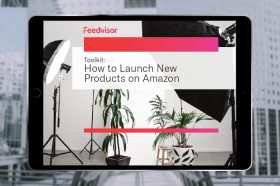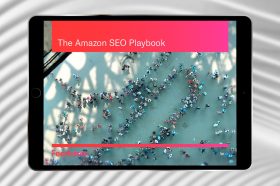Resources - Blog
Understanding Amazon’s “Frequently Bought Together” Feature

The role of personalization in the customer experience is becoming even more deeply integrated than it already is today, particularly in the e-commerce space. According to HubSpot, 74% of online consumers get frustrated with websites when offers and ads that have nothing to do with their interests show up. Amazon has taken specific measures to weave personalization into their customer journeys, particularly through the recommendation engines behind their “Frequently Bought Together” feature.
Stay on top of the latest e-commerce and marketplace trends.
What Is Amazon’s “Frequently Bought Together” Feature?
The upsell feature, which is automated by Amazon based on the browsing and purchasing habits of customers, drives customers to add more items to their order. The items are typically complementary to the first item or have been purchased at the same time by a large number of previous customers. Customers can add all of the “Frequently Bought Together” products to their cart at once, or select the specific ones they want to bundle together in one order.
The feature is located beneath the main product detail and sometimes at checkout. Although as online retailers and brands you cannot choose which products get shown here, it is important to be aware of the feature and how it operates. Not only does the feature increase sales for the add-on products, but it may also enable non-Prime shoppers to hit the free shipping threshold or a suggest an item that the shopper wants or needs but may not have thought of.
Selling Factors to Keep in Mind for “Frequently Bought Together”
Like most aspects of selling on Amazon, such as increasing Buy Box share, seller performance metrics and account health definitely play a role in the backend decision of which items get picked to inhabit the prime “Frequently Bought Together” real estate. To maintain strong overall metrics, you should strive to avoid late shipments, maintain a low return rate, and encourage positive seller feedback. In addition to that, the percentage of shoppers who bought two or more items at once matters, along with inventory position and item availability, pricing, Prime eligibility, and shipping speed.
What Is the Science Behind the Feature?
Through suggestive selling and what Amazon calls “item-to-item collaborative filtering,” the company harnesses recommendation algorithms to personalize the shopping experience by customer. Through Amazon’s algorithm, the recommendations are produced in real-time to create high-quality output based on each shopper’s specific interests. The data-driven algorithm bases the recommendations on a user’s purchase history, items they have looked at and not purchased, items they have rated or reviewed, and what other buyers of those same items have viewed and bought. Item-to-item collaborative filtering allows for scalability over large customer bases and product catalogs, can react immediately to any changes in the shopper’s data, and makes thoughtful recommendations regardless of how many purchases or ratings the shopper has on the platform.
By integrating recommendations throughout the buying process — from product discovery to checkout — Amazon is increasing engagement and stickiness with consumers. Other suggestive selling pages that Amazon has incorporated into their web pages are “What Other Customers Are Looking at Now,” “Customer Who Bought This Item Also Bought,” “Your Recently Viewed Items,” and “Featured Recommendations.”
Although you can not directly modify the items that show up in Amazon’s “Frequently Bought Together” feature, you can put marketing campaigns in place that target cross-selling, upselling, or product bundling. Given that 35% of all of Amazon’s marketplace sales are estimated to be generated by their recommendation engine, it is clear that the personalized recommendation trend will only continue to gain traction and be optimized by Amazon. Not only does personalization drive net new business, but it keeps existing customers coming back to make additional purchases in the future.
Learn what Feedvisor can do for your business.
When you partner with Feedvisor, you automatically receive access to our true, AI-driven technology and hands-on team of e-commerce experts. Contact one of our team members today to learn more about our end-to-end solution for brands and large sellers on Amazon, Walmart, and e-marketplaces.



